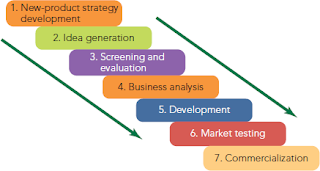Stages of New Process Development
In today’s competitive pharmaceutical market, a good product strategy and careful planning are vital to succeed. Pharma companies are competing on all fronts to develop innovative products to gain an upper hand in the market. Often these products fail to secure an
advantage and end up being just another high cost centre for the company. Thousands of clinical studie are being carried out as we speak, but only a few drugs get approval. In other words, the success rate of drugs under experiment
making it to the shelves of a drug store or your medicine cabinet is quite low. This low success rate puts a lot of pressure on firms
to keep a large set of products in the pipeline, thus increasing demands on process development groups to lower time-to-market
and time-to-clinic. Additionally, the recently approved proteins are monoclonal antibodies that will need lifetime doses 10-100
times bigger than various recombinant protein drugs.
advantage and end up being just another high cost centre for the company. Thousands of clinical studie are being carried out as we speak, but only a few drugs get approval. In other words, the success rate of drugs under experiment
making it to the shelves of a drug store or your medicine cabinet is quite low. This low success rate puts a lot of pressure on firms
to keep a large set of products in the pipeline, thus increasing demands on process development groups to lower time-to-market
and time-to-clinic. Additionally, the recently approved proteins are monoclonal antibodies that will need lifetime doses 10-100
times bigger than various recombinant protein drugs.
Drugprocess development is not quite transparent. However, here we will go through the 6-step process that most drugs go through from
concept to a medicine cabinet.
Drug discovery and target validation: The first step involves choosing a molecule, it can be a gene or protein, to target with a drug.
After testing multiple molecules, the pharma company will pick the one having promise.
Preclinical testing: There are two subcomponents in the next step of the drug development process: in vivo and in vitro testing. In this stage, researchers will whittle thousands of drug molecule candidates down to a handful.concept to a medicine cabinet.
Drug discovery and target validation: The first step involves choosing a molecule, it can be a gene or protein, to target with a drug.
After testing multiple molecules, the pharma company will pick the one having promise.
Investigational new drug application filing: In the third step the company has to submit an investigational new drug application
to the concerned drug authority before beginning trial on humans. The concerned authority will scrutinize the results from preclinical
testing.
Clinical studies in different phases: Clinical studies are conducted in three phases.
In the first phase, a few healthy individuals are given the drugs and an observation is made based on how it is absorbed and removed
from the body and any side effects it may cause and if it is leading to the desired effect.
In the second stage, the patient pool is widened from a handful to perhaps 100 or more and it includes people stricken by the illness
in question.
In the third phase, more patients are included that number in thousands and this phase is by far the costliest and longest in the drug development process. In this phase, safety remains a priority, but efficacy also plays a major role.
Drug application filing: In this phase, the drug company files a new application with respective government drug authority. It is just a
stepping-stone where the authority promises to review the application over the next few months.
Remedial measures: In this step, the drug authority will ask the company to run additional studies or change its manufacturing process.
Once approved, the drug becomes available in the market immediately.
Downstream Process Development
Combinations of optimized methods will ensure customers get the maximum amount of target protein with the highest purity. Here
are the steps involved in downstream process development:
Purification process development
Protein modification process development
Analytical assay development
are the steps involved in downstream process development:
Purification process development
Protein modification process development
Analytical assay development
Upstream Process Development
Strict process control is needed to ensure that the protein expression capacity of cell lines is maintained. Here are the steps involved
in upstream process development:
Cell culture condition improvement
Feeding strategies optimization
Scale-up to bioreactor
Product quality control and optimization
in upstream process development:
Cell culture condition improvement
Feeding strategies optimization
Scale-up to bioreactor
Product quality control and optimization
The whole drug development proces from start to finish spans about 10 to 15 years, leaving drug developers with a decade or so for a patent on branded drugs once
they enter the market.




Comments
Post a Comment